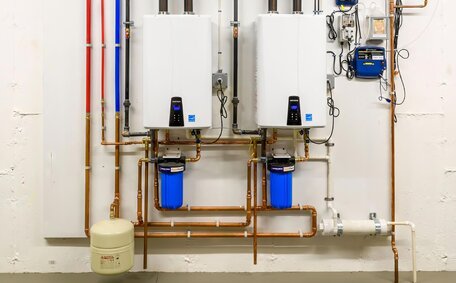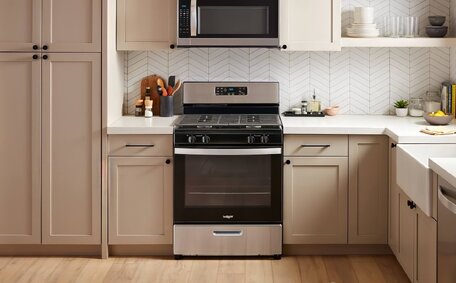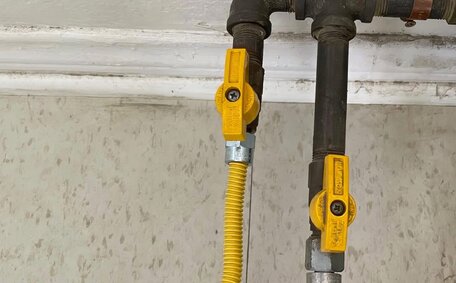
How Hard Water Hurts Hot Water Heaters
Hard water leaves mineral deposits in heaters, pipes and tanks. This limescale reduces efficiency, lifespan and hot water availability. Contact us for affordable water softening solutions.
Read MoreGas regulators are crucial for the safe and efficient operation of your appliances by managing gas pressure in your system effectively.
Single stage regulators calibrate gas pressure from the cylinder into the regulator, ensuring consistent and adequate heat for your gas grill. Picnic Point Plumbing specialises in installing, maintaining, and repairing RV propane regulators and commercial gas cylinders.
High gas pressure from a faulty regulator can compromise both appliance performance and safety.
Know your appliance’s normal behaviour to identify signs faulty operations might demonstrate, which include flames that burn too high or low, the smell of gas from a nearby gas bottle, black smoke coming from appliances, and trouble lighting burners. When a regulator is identified early for issues and replaced, a faulty propane regulator can lead to a reduced risk of leaks, explosions, carbon monoxide poisoning or insufficient heating. Our licenced technicians are skilled at conducting a comprehensive pressure test on systems to identify issues, transform requirements into gas safety solutions for your home, replace worn components, and ensure peak efficiency.
When propane is part of the equation, a double stage regulator with an automatic changeover serves as a control device installed on natural gas systems linked to your propane tank to regulate pressure and maintain consistent gas flow to appliances. Its key purpose is the first stage regulator process, and the after first stage process to take incoming high-pressure gas from propane tanks or main lines and reduce it to safe, consistent working levels before the gas reaches your appliances.
On the other hand, regulators control the outlet pressure, as seen on the pressure gauge, to ensure your gas appliances receive gas at the manufacturer’s recommended pressure, typically around 11 inches of water column for natural gas or 10-13 inches of water column for propane. This process ensures propane flows smoothly into regulator components, allowing your burners to operate in a safe, efficient manner.
If there’s high gas pressure present, it can cause problems such as flames burning excessively tall off all burners or appliances failing to ignite correctly. If pressure is too low, you may experience weak flames, trouble lighting appliances, or burners that go out frequently. By maintaining inlet pressure at the appropriate specifications, regulators preclude issues and ensure you can safely blow air through propane flow all the way into your gas-fed appliances.
The regulator also serves as a safety buffer, integrating a bypass valve mechanism to ensure your RV propane gas tank remains safeguarded against unexpected pressure fluctuations or spikes. This safety feature of a second stage regulator helps avoid potential risks like gas leaks or fire hazards in various applications, including your propane system in your car. Overall, when a regulator is properly functioning, it’s a vital component for performance, efficiency and safety in any gas system.
The most common symptoms that may indicate faulty propane devices include your gas regulator potentially requiring replacement:
These issues typically arise because the regulator becomes faulty, failing to properly control the inlet valve flow gas pressure. Excessively high or low gas pressure from LP gas affects the flow of gas to appliances. Left unaddressed, a faulty regulator can cause hazardous gas leaks, carbon monoxide poisoning, fires or explosions.
Should you have concerns about your regulator’s condition, promptly switch off the regulator and consult with a licenced tradesperson to assess its integrity and pursue replacement or repair as needed. Do not attempt to service or replace regulators on your own unless properly trained and equipped to work with gas systems safely.
Diminished or erratic flame output from appliances could be a significant alert, suggesting you need regulator evaluation or replacement due to compromised performance. This occurs when your propane regulation is compromised, signalling then that your regulator is bad and unable to maintain consistent gas pressure.
Faced with excessively low pressure, appliance flames might present as diminished, sluggish, and with a yellow orange hue as opposed to a vigorous, bright blue. The flames may also surge up and down or even go out frequently as pressure fluctuates.
Because the burners do need replace a steady gas flow for proper combustion, failing regulators lead to burners that cannot fire correctly. This leads to a number of problems:
In summary, unstable flames underscore the need to replace regulator to ensure safe and efficient burner operation. Our licenced technicians can install a new, properly calibrated regulator tuned to meet all your appliance requirements.
One of the common signs of a malfunctioning gas regulator is the challenge encountered in igniting appliances powered by propane or natural gas. Where the regulator fails to supply requisite pressure, there may not be enough gas flow, a circumstance that can do a disservice to appliance igniters or pilots trying to ignite effectively.
You might ponder how much effort is necessary when your burners demand multiple ignition tries before engaging, or if they utterly refuse to light. It becomes evident when ovens won’t light effortlessly, or fail to sustain steady warmth, hinting at the necessity to check your regulator’s operation. These issues tend to progressively worsen over time if the underlying pressure problem is not addressed.
In some cases, burners may light unevenly. Certain sections may ignite while others remain unlit. Weak pressure can make ignition unreliable and unpredictable across different burners on your stove or hotplates.
Difficulty igniting appliances indicates the gas regulator needs replacing by a licenced professional. Our team can install a purpose-matched regulator to restore appliance functionality and safety.
Hearing strange sounds coming from your gas regulator can also signal potential issues. This may include:
These noises arise when faulty regulators fail to properly control gas pressure. Though unusual regulator noises rarely pose immediate danger, it’s prudent to call in a specialist to check for static gas issues and address concerns.
Our licenced technicians at Picnic Point Plumbing can replace faulty regulators to stop unwanted noises and restore safe functioning. We’re available 24/7 to address regulators making noises or any other problems.
Begin your maintenance with a regulator check by taking action to ensure all regulator components are inspected for any signs of damage or issues. Look for:
Any visible defects likely mean the regulator needs replacing. Contact a professional to assess the situation and buy one if necessary.
Use a manometer to check inlet and outlet pressure readings:
Pressures should remain steady and match manufacturer specs when burners are on. Fluctuating readings indicate a faulty regulator.
Check for leaks by brushing or spraying soapy water solution onto the regulator and connection points while gas is flowing. Observe carefully for growing bubbles, which signify leaks.
If leaks, damage or pressure issues are found due to a faulty propane component, it’s time to replace your regulator and turn off gas supply immediately. The regulator requires replacement by a qualified professional to restore safe functioning.
Check for leaks by brushing or spraying soapy water solution onto the regulator and connection points while gas is flowing.s supply immediately.
Co/li>
To book a home visit or for emergency assistance with a potentially faulty regulator, contact us on 1300 349 338 or email jobs@picnicpointplumbingservices.com.au. Act quickly at the first signs of problems to prevent hazardous incidents and ensure reliable functioning.
To keep your gas regulator working safely and efficiently for as long as possible, follow these preventative maintenance tips:
Inspect the physical condition of your regulator on a regular basis, ideally once a year. Check for corrosion, dents, leaks, or other damage that can affect performance and safety.
Protect your regulator from water, dirt, and extreme temperatures which can affect its operation. Use coverings if it’s exposed to the elements.
Replace regulators every 5-10 years as their components degrade over time; schedule a technician visit for installation.
Note any potential signs of early regulator problems, like unusual noises or flames. Prompt professional diagnosis saves you from more serious issues down the track.
Contact Picnic Point Plumbing at the first sign of regulator issues for our licensed technicians to restore safe, reliable gas regulation.
In summary, your propane regulator plays a vital role in ensuring appliances run safely and efficiently. Signs of a faulty regulator include weak or unstable flames, ignition troubles, unusual noises, and visible damage. While regulators typically provide a long time of service, lasting five years or more, annual inspections help spot problems early.
If you notice any issues with flames, performance, or the physical regulator, take action right away:
The team at Picnic Point Plumbing are fully qualified gas fitters available 24/7 to troubleshoot regulator problems. To book an appointment or emergency callout, contact us on 1300 349 338 or email jobs@picnicpointplumbingservices.com.au.
Address regulator issues quickly to prevent gas leaks, fire hazards, and carbon monoxide risks. Rely on our experts for testing, repairs, and replacement.
Hard water leaves mineral deposits in heaters, pipes and tanks. This limescale reduces efficiency, lifespan and hot water availability. Contact us for affordable water softening solutions.
Read MoreIt’s important to routinely check your gas appliances for any issues. Signs of problems include gas leaks, strange sounds, odd smells and more. Have a professional inspect your gas appliances annually and service them regularly for safety.
Read MoreUpgrading your gas meter is a simple process completed by registered technicians. It involves disconnecting your gas supply for 15 minutes to swap the old meter for a new digital smart meter. The upgrade is free and improves accuracy.
Read MorePicnic Point, 2213 NSW
We will call back as soon as possible.




